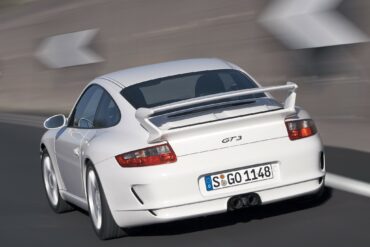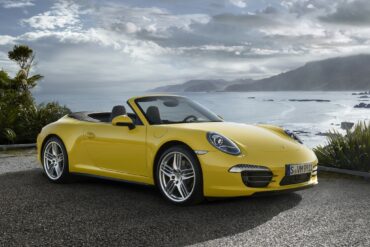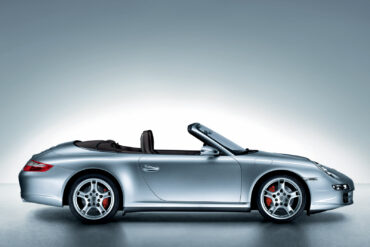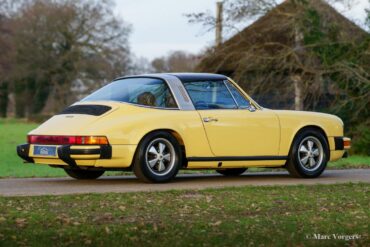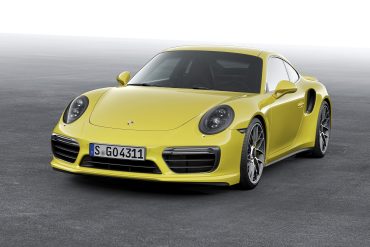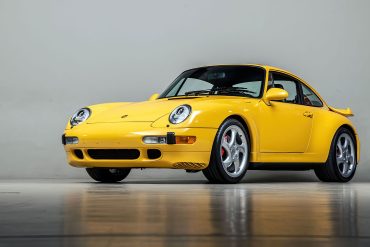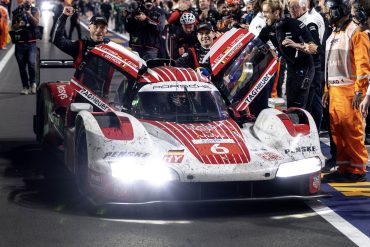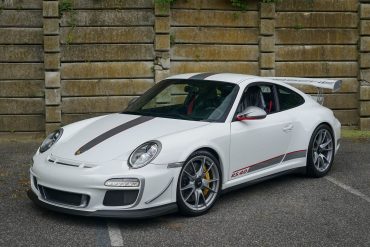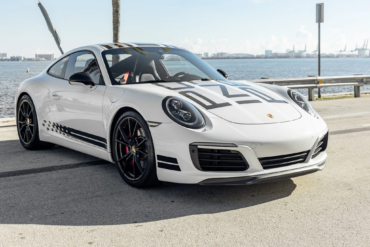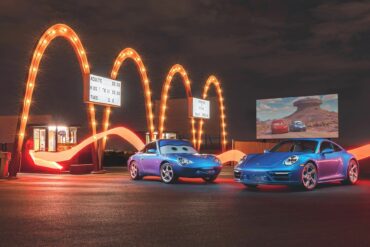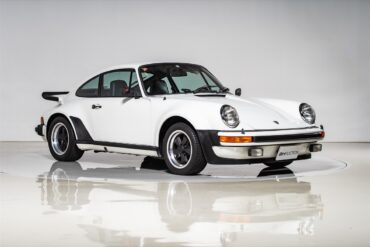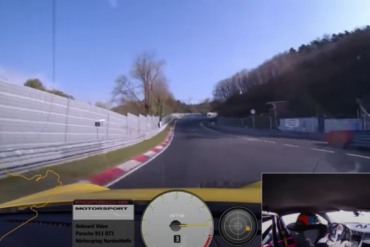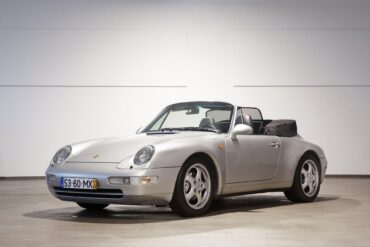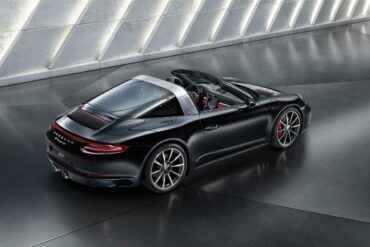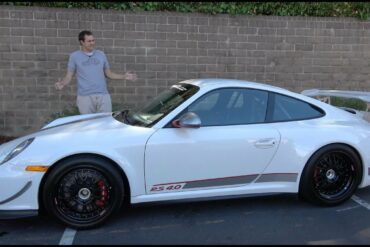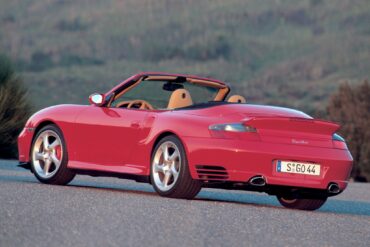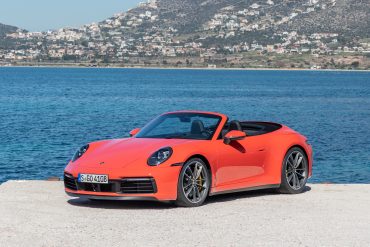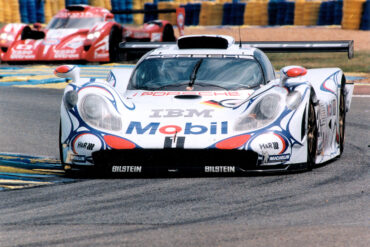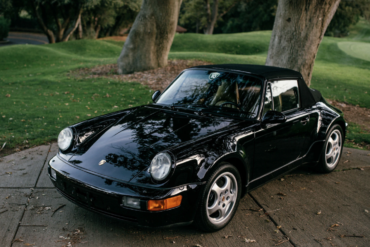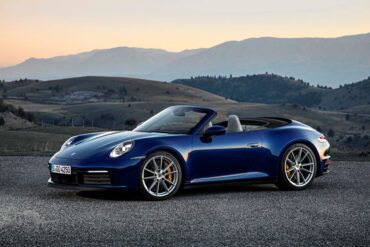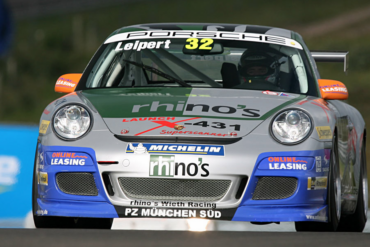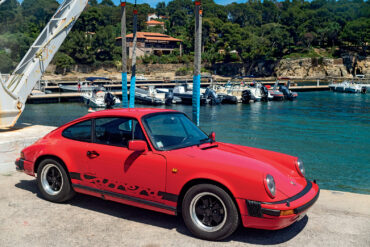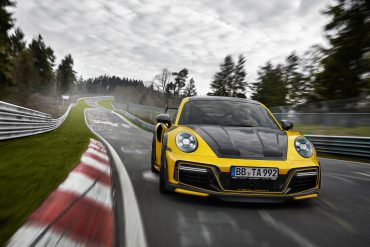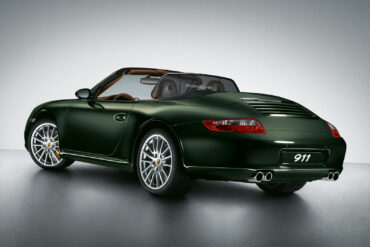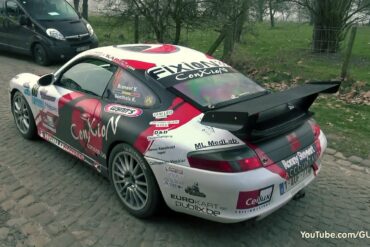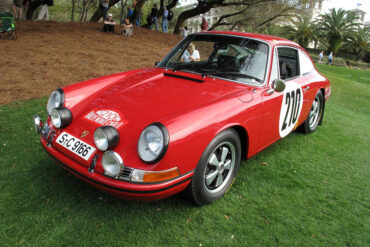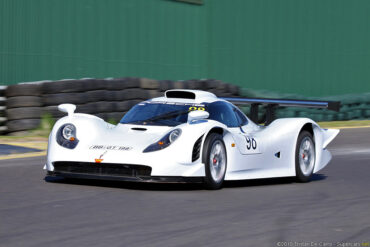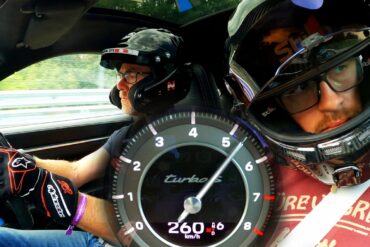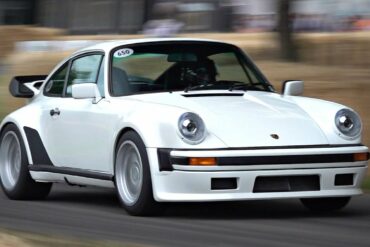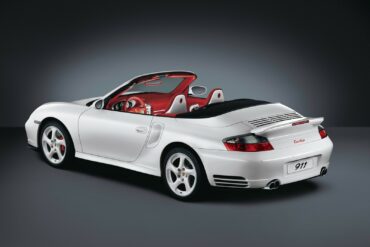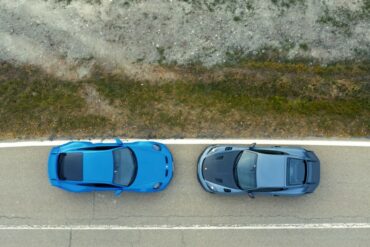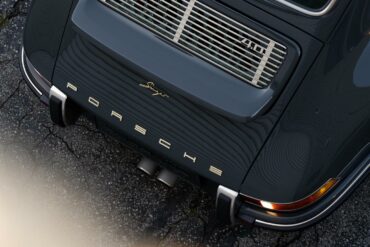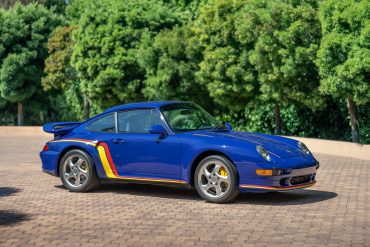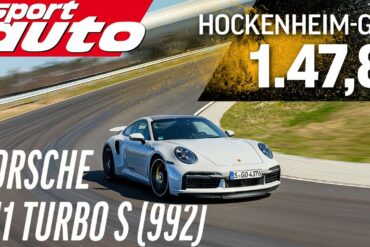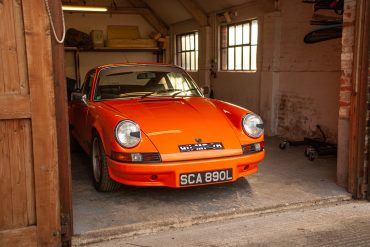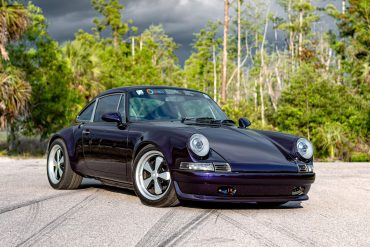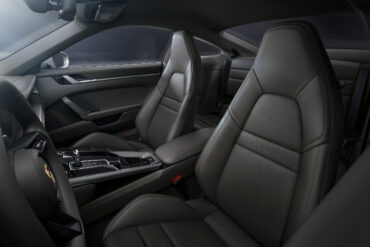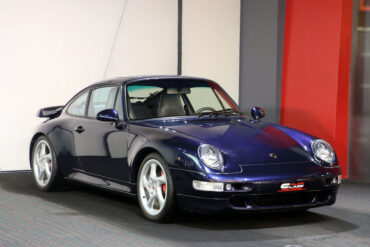2007 Porsche 911 GT3 (997) Technical Specifications Engine Type Flat 6 Induction Normally-aspirated Cooling Water-cooled Valvetrain Double overhead camshafts Injection Port...
Porsche 911
All
- Porsche 912
- 911 Carrera RS 2.7
- Porsche 901 (911)
- Porsche 911 (F-Series)
- Porsche 911 (991)
- Porsche 911 (G-Series)
- Porsche 911 (964)
- Porsche 911 (993)
- Porsche 911 (996)
- Porsche 911 (997)
- 911 Speedster Concept
- Porsche 911 (992)
- 964 Carrera 2
- 964 Carrera 4
- ’30 Jahre’ Anniversary
- 964 Speedster
- 964 Turbo
- 964 Carrera RS
- 964 Carrera Cup
- 964 RSR
- 993 Carrera
- 993 Carrera 4
- 911 Edition 50
- 993 Carrera 4S
- 911 2.0 Bertone Roadster
- 993 Carrera S
- 993 Targa
- 992 Sport Classic
- 993 Turbo
- 996 Carrera
- 993 Carrera RS
- 992 America Edition 911
- 996 Carrera 4
- 993 GT2
- 996 Targa
- 993 Carrera Cup
- 996 Carrera 4S
- 996 Turbo
- 996 Turbo S
- 996 GT3
- 996 GT3 RS
- 996 GT2
- 996 GT3 Cup
- 996 GT3 R
- 996 GT3 RSR
- 997 Carrera
- 996 GT3 RS Race
- 997 Carrera S
- 997 Carrera 4
- 997 Carrera 4S
- 997 Targa
- 911 Carrera 3.0 Coupe (G-Series)
- 997 Targa 4S
- 997 Turbo
- 997 Turbo S
- 997 GT2
- 992 Carrera T
- 997 GT2 RS
- 997 Speedster
- 997 Carrera GTS
- 992 Dakar
- 997 Carrera 4 GTS
- 997 GT3 Cup
- 997 GT3 R
- 997 GT3 RSR
- 997 GT3
- 997 GT3 RS
- 997 GT3 R Hybrid
- 991 Carrera
- 991 Carrera 4
- 991 Carrera S
- 991 Carrera 4S
- 991 Targa 4
- 991 Targa 4S
- 991 Turbo
- 991 Turbo S
- 991 Carrera GTS
- 991 Carrera 4 GTS
- 991 Targa 4 GTS
- 991 911 R
- Porsche 992 GT2 RS
- 991 GT3
- 991 GT3 RS
- 991 GT2 RS
- 991 Speedster
- 991 GT3 R
- 991 GT3 Cup
- 991 RSR
- 991 Carrera T
- 992 Carrera 2
- 992 Carrera 4
- 992 Carrera S
- 992 Carrera 4S
- 992 Targa 4
- 992 RSR
- 992 Targa 4S
- 992 Carrera GTS
- 992 Carrera 4 GTS
- 992 Targa 4 GTS
- 992 Turbo
- 992 GT3 R
- 992 Turbo S
- 992 GT3
- 992 GT3 Touring
- 992 911 S/T
- 911 (G-Series)
- 992 GT3 RS
- 992 GT2 RS
- 992 GT3 Cup
- 911 Carrera 3.0 (G-Series)
- 911 S (G-Series)
- 911 Carrera RSR 2.8
- 911 SC (G-Series)
- Porsche 992 GT3 R Rennsport
- 911 S/T
- 911 Carrera 3.2 (G-Series)
- 911 (Base Model)
- 911 Turbo (930)
- 911 SC Safari
- 911 L
- 911 Carrera RSR Turbo 2.1
- 911 T
- 911 Carrera RSR 3.0
- 911 E
- 911 S
- 911 SC San Remo
- 911 Carrera 3.2 Clubsport
- 911 R
- Porsche 953
- 911 Carrera RS 3.0
- 911 T/R
- 911 Carrera 25th Anniversary
- 911 SC RS
- 911 Turbo LE
- 911 Carrera Commemorative
- 911 Carrera 2.7 (G-Series)
- 911 3.2 Speedster
- 911 Turbo 2.7
- 964 Turbo S
1998 Porsche 911 Carrera S (993) Technical Specifications Engine Type Flat 6 Induction Naturally Aspirated Cooling Air/oil-cooled Valvetrain Single overhead...
2002 Porsche 911 Carrera 4S Coupe (996) Technical Specifications Engine Type Flat 6 Induction Normally-aspirated Cooling Water-cooled Valvetrain Double overhead...
A mixed of fear, adrenaline, excitement, and complete enjoyment is what you’ll experience, especially if you ride shotgun in a...
2013 – 2015 Porsche 911 Carrera 4S Cabriolet Pictures & Gallery ...
2008 Porsche 911 Carrera 4S Coupe (997) Technical Specifications Engine Type Flat 6 Induction Normally-aspirated Cooling Water-cooled Valvetrain Double overhead...
Porsche 911 Carrera T Video Review In the Porsche 911 Carrera T Henry Catchpole revels in the delights of no...
The 935 tribute car was a non-street-legal collector's car built in a series of 77 cars. It was built from the 911 991.2 GT3 R racing car, fitted with the engine and transmission from the 911 991.2 GT2 RS street car and with the bodykit showing some design details from the 935 cars. The problem: it was not as powerful as the 1978 935 was with even smaller engine and the modern car is much heavier, so the power-to-weight ratio was almost 60% better 40 years earlier.
1974 – 1977 Porsche 911 S 2.7 Targa Pictures & Gallery...
2016 Porsche 911 Carrera 4S (991.2) Technical Specifications Engine layout Rear Engine Engine type Boxer, twin-turbo Cylinders 6 Valves per cylinder...
The Rinspeed Porsche R69 Turbo, aka Porsche Testarossa, was a limited production car from Switzerland. It is believed that around...
The Porsche 930 Turbo might not be as valuable or coveted as the early Porsche 911, but recently a special...
1991 Porsche 911, Reimagined by Singer. Feast your eyes on Singer Vehicle Design’s meticulously restored and optimized air-cooled Porsche icon....
2005 Porsche 911 Turbo X50 (996) Technical Specifications Price $ $133,000 Engine Aluminum Alloy, Twin Turbo Flat-6 Position Rear Longitudinal...
Your All-Season Sports Car is Here In an effort to expand its 911 lineup even further, Porsche added two all-wheel-drive...
2017 – 2019 Porsche 911 Turbo S (991.2) Pictures & Gallery ...
The Porsche 911, the undisputed king of sports car evolution, has continued to be transformed since its 1963 debut. One...
Porsche Penske Motorsport stormed to a maiden victory with the Porsche 963 in the FIA World Endurance Championship WEC. At...
The guys at PCarMarket have an auction going at the moment that all Porsche fans should know about. A final salute...
This 1994 Porsche 911 belongs to a limited production run of around 1,500 Turbo 3.6 models manufactured during the 1993...
Designed and manufactured by Porsche Exclusive, also known as the ‘Special Wishes Department’, this department of the factory is dedicated...
In less than a week the Monterey Car Week will start, and they have just announced a very exciting update....
Porsche 911 GT3 nordschleife Test 7:40 Video...
The new GT3 Touring Review 2022 Porsche 911 GT3 Touring review! The new GT3 Touring is absolutely the GT3 I...
Introduced in 1963, the Porsche 911 was initially designed as a lightweight, low-power finesse car. However, in 1975, Porsche launched...
2021 Porsche 911 Carrera S Cabriolet (992) Technical Specifications PDK 992 Carrera S Cabriolet Specs Model 992 911 Carrera S Cabriolet...
Porsche Option Codes – Porsche 911 (1976 Model Year) Looking to decode your 1976 Porsche 911 option codes? Want to...
7 minutes 12.7 seconds at the Nürburgring – Onboard footage of the 911 GT3 6 minutes 57 seconds. Curious to...
With a limited production of just 500 units worldwide, the Porsche 911 Turbo S Exclusive Series lives up to its...
1998 Porsche 911 Carrera 4 Cabriolet (993) Technical Specifications Engine Type Flat 6 Induction Naturally Aspirated Cooling Air/oil-cooled Valvetrain Single...
2016 Porsche 911 Targa 4S (991.2) Technical Specifications Engine Engine layout Rear Engine Engine type Boxer, twin-turbo Cylinders 6 Valves per...
In the 50th anniversary year of the 911, Porsche opened a new chapter in race track performance sports cars. The...
Porsche GT1 versus McLaren F1 GTR Great battle between the Porsche GT1 and the McLaren F1 GTR at Le Mans...
Carfection Makes The Case for the Manual Henry Catchpole demonstrates why the manual is something to be treasured in a...
Hard Acceleration Runs in a 992 GT3 – She’s a Screamer...
Doug DeMuro Reviews the 911 GT3RS 4.0 The 2011 Porsche 911 GT3RS 4.0 is one of the most desirable modern...
2005 Porsche 911 Turbo Cabriolet (996) Technical Specifications Engine Type Flat 6 Induction Twin-turbocharged Cooling Water-cooled Valvetrain Double overhead camshafts...
Autocar Drives the Gunther Werks 993 And in this vid is a rather serious take on the theme. California-based Gunther...
2022 Porsche 911 Carrera S Cabriolet (992) Technical Specifications PDK 992 Carrera S Cabriolet Specs Model 992 911 Carrera S Cabriolet...
2022 Porsche 911 Carrera 4S Cabriolet (992) Technical Specifications PDK 992 Carrera 4S Cabriolet Specs Model 992 911 Carrera 4S Cabriolet...
The 1998 GT1 car was a totally rethink and vast upgrade versus the prior year car. 1998 Le Mans 24-hour race In the 1998 jubilee year, the Porsche team celebrated its 16th overall victory in Le Mans with a double win for the 911 GT1 98. On 6th/7th June, the winning car was driven by Laurent Aiello, Allan McNish and Stéphane Ortelli. It was almost 50 years to the day on which the first Porsche sports car saw the light of day.
The American Roadster is essentially a turbo-bodied Carrera Cabriolet with Turbo suspension and brakes. Like the 356 America Roadster it was named after, the Type 964 America Roadster was a limited-edition, driver-focused convertible destined for the American market. Production for the America Roadster was limited at only 250 examples, and the model was only produced in 1992 and 1993. Its engine was a standard unit making 250 horsepower, but the special edition had the wide fender flares, suspension, brakes, and 17-inch Porsche Cup wheels of the 911 Turbo.
The 964 Carrera RS (Standard) was introduced by Porsche for model year 1992 specifically for the European market as a lightweight, high performance version of the 964 Carrera 2. It featured a revised version of the standard 3.6 liter engine, titled M64/03 internally, with an increased power output of 260 bhp (194 kW; 264 PS). The RS does not look much different from the other 911 models of the period but its weight is reduced and power increased. True to its racing spirit, the Carrera RS featured bucket seats and thinner materials, but lacked power windows, air conditioning, air bags, and other creature comforts.
2023 Porsche 911 Carrera Cabriolet (992) Technical Specifications Model 911 Carrera Cabriolet Engine Engine layout Rear Engine Engine type Boxer,...
2007 Porsche 911 GT3 Cup (997) Technical Specifications Engine 3.6 L Boxer-6 w/Dry Sump Lubrication Fuel Feed Multi-point, Sequential Injection Bore 76.4...
McLaren 600LT vs Lamborghini Huracan STO vs Porsche GT3 RS This is actually a pretty fair comparison video. For those...
1976 – 1977 Porsche 911 Carrera 3.0 Technical Specifications Type 2+2 FHC Number of doors 2 Engine 3.0 L Aircooled...
Porsche Option Codes – Porsche 911 (1980 Model Year) Looking to decode your 1980 Porsche 911 option codes? Want to...
Join Harry as he tests to see the difference between a Porsche 992 GT3 Touring and a regular GT3....
The first 912s were made in the spring of 1965, alongside the last of the 356s. Originally the 912 was...
The 997.2 Turbo was introduced for the 2010 model year and received a new 3.8 litre engine capable of 493 horsepower, a significant evolution as compared to the 473hp in the 997.1 Turbo. The 997.2 Turbo was available in both manual and automatic transmissions, but the automatic evolved from the Tiptronic used in its predecessor, to a sportier dual-clutch PDK. Approximately 3,300 coupes were produced and 1,800 cabrios, far less than its predecessor. An epic all-around GT with more performance than you could ever need.
2011 Porsche 911 Turbo S (997.2) Technical Specifications Engine Type Flat 6 Induction Twin-turbocharged Cooling Water-cooled Valvetrain Double overhead camshafts Injection...
Dubbed the “Lautrec Commission,” this custom Porsche 911 reimagined by Singer showcases an extraordinary and meticulously planned specification. Similar to...
The TechArt GTstreet R is a much improved version of the Porsche 911 Turbo thanks to a custom body kit...
Porsche Option Codes – Porsche 911 (1978 Model Year) Looking to decode your 1978 Porsche 911 option codes? Want to...
Which one would you prefer to get your hands on? A Porsche Carrera GT or a Porsche 911R Join Carl Hartley...
Detailing a 997.2 Turbo S – Paint Correction, Wheels Off + Modesta Coatings We all know how obsessed we are...
Carrera RSR Turbo On Track Fun At this year’s Historic Grand Prix I was lucky enough to capture this 1974...
Singer Vehicle Design – Naples Commission Today, we take a closer look at the Singer Vehicle Designs Naples Commission. This...
2008 Porsche 911 Carrera Cabriolet (997) Technical Specifications Engine Type Flat 6 Induction Normally-aspirated Cooling Water-cooled Valvetrain Double overhead camshafts...
Porsche 996 GT3 Rally Flat 6 Goodness Here is another great video from the Rally of Haspengouw 2013: a Porsche...
1968 – 1969 Porsche 911 T Coupe 2.0 (SWB & LWB) Pictures & Gallery...
The new Porsche 911 GT3 carries the same four-litre flat engine from the GT3 RS with its power increased by 25hp for a new total of 500hp. The chassis is also redesigned and now features a rear-axle steering and a lighter construction. The Porsche 911 GT3 type 991.2 comes in at 1,430 kg when its tank is full. Although it is a bit heavier than the previous model, it still manages to reach 0-100km/h in just 3.4 seconds and reach top speeds of 318km/h. What’s more interesting here is that Porsche finally decided to switch back to a 6-speed manual gearbox (7-speed PDK is standard).
Collecting Cars is offering you a chance to own a rare performance car: a 2022 Porsche 911 GT3 Touring ‘70...
Our guys from the CAR magazine decided to pit the Ferrari 458 Speciale and Porsche 911 GT3 against each other...
Clubsport Series II Restomod In 2007 Paul Stephens introduced a lightweight coupé called the Clubsport. Created from the ethos of...
This one-of-a-kind RWB build boasts custom hand-fitted bodywork, including modified bumpers, rocker panels, bolt-on fenders, a GT2-style rear wing, a...
This lightweight hotrod, based on a Euro 911, is built for high-performance driving. With tasteful modifications, including a carbon fiber...
1998 Porsche 911 GT1 ’98 Straßenversion Pictures & Gallery...
Porsche Targeting Production Car Lap Records Away From the ‘Ring While the Nürburgring unarguably remains the de facto proving grounds...
In the world of automotive enthusiasts, the fusion of history, engineering, and art often leads to extraordinary creations. One such...
2017 Porsche 911 Turbo Cabriolet (991.2) Technical Specifications Engine Engine layout Rear Engine Engine type Boxer, twin-turbo Cylinders 6 Valves per...
The Gunther Werks 400R is a modern version of Porsche’s last air-cooled 911 and is the first car from the...
Jeremy takes the Porsche 911 Carrera S out for a spin Jeremy takes the Porsche 911 Carrera S out for...
The 992 Turbo S comes with an all-new, 3.8 liter boxer six with two variable turbine geometry (VTG) turbochargers. The...
2010 Porsche 911 Carrera 4 Coupe (997.2) Technical Specifications Engine Type Flat 6 Induction Normally-aspirated Cooling Water-cooled Valvetrain Double overhead camshafts...
$1.45M Porsche 930 with Formula 1 Engine by Lanzante This is Lanzante’s Porsche 930 TAG Turbo and its limited to...
Built to homologate the 2011 GT3 RSR racecar, the RS 4.0 is fitted with the 3996cc engine which raises power output...
2003 Porsche 911 Turbo Cabriolet (996) Technical Specifications Engine Type Flat 6 Induction Twin-turbocharged Cooling Water-cooled Valvetrain Double overhead camshafts...
Gunther Werks’ latest creation, Project Tornado, is a road-legal coupe that follows the company’s tradition of building models around the...
2021 Porsche 911 Carrera S (992) Technical Specifications PDK 992 Carrera S Specs Model 992 911 Carrera S Engine Engine layout...
Join Mark as he takes the Porsche GT4 RS and the 992 GT3 for a spin around the Italian Mountains...
Known world-wide for their excellence in engineering, some question the need to modify contemporary Porsches for increased power. That “some”...
At the heart of the 991.2 911 Turbo is a twin-turbocharged flat-six with 540 horsepower and 523 pound-feet of torque. That’s a meaningful 20 more horses than the 991.1 Turbo. Improvements that come from increases in boost and fuel-injection pressures. Rounding the skidpad, the Turbo posts 1.02 g’s relatively easily. The wide P Zeros in back and the standard four-wheel steering conspire to hide the fact that 62 percent of the Turbo’s 3656 pounds sits over the rear wheels. With sport-plus selected, the 991.2 Turbo hits a 1.0-second run to 30 mph and a 2.6-second zero-to-60 time.
I just love the Porsche 930 Turbo built between 1978 and 1989, with her massive rear ‘whale tale’ wing and...
1966 Porsche 911 2.0-litre – GVB 911D – parked on track at Lodge Corner after practice for the Oulton Park...
2023 Porsche 911 Carrera GTS (992) Technical Specifications Model 911 Carrera GTS Design and cylinders Twin-turbo boxer 6 Number of cylinders...
Singer Vehicle Design – Stockholm Commission Today, we take a closer look at the Singer Vehicle Designs Stockholm Commission. It...
In 1997, Porsche introduced the 993 Turbo S, a limited-production model that served as a magnificent farewell to the era...
For almost 50 years, the Porsche 911 Turbo as a classic Coupé (and for more than 20 years in the...
Originally based on the Type 964 air-cooled 911, the car you see before you bears little resemblance to a typical...
Although the 992 Porsche 911 GT3 RS gets all the hype and praise, the 992 Turbo S is definitely not...
Henry Catchpole drives the 991.2 Porsche 911 GT3 RS in search of the forgotten Sudschleife circuit....
Written by: Glen Smale Images by: Virtual Motorpix/Glen Smale and Corporate Archives Porsche AG Already a Member? Sign in to...
2015 – 2016 Porsche 911 Carrera GTS (991) Pictures & Gallery ...
The unique restoration of this 1992 Porsche 964 Carrera 2 Coupe was exclusively commissioned to Olsen Motorsports, who carried out...
2021 Porsche 911 Carrera 4 Cabriolet (992) Technical Specifications Engine layout Rear Engine Engine type Boxer, twin-turbo Cylinders 6 Valves per...
Porsche 993 VIN Numbers Below is our detailed explanation of the 993 VIN codes. Our easy to use guide should...
Top down summertime driving in the current Porsche 911 Carrera 4S Cabriolet is about as good as it gets. The...


